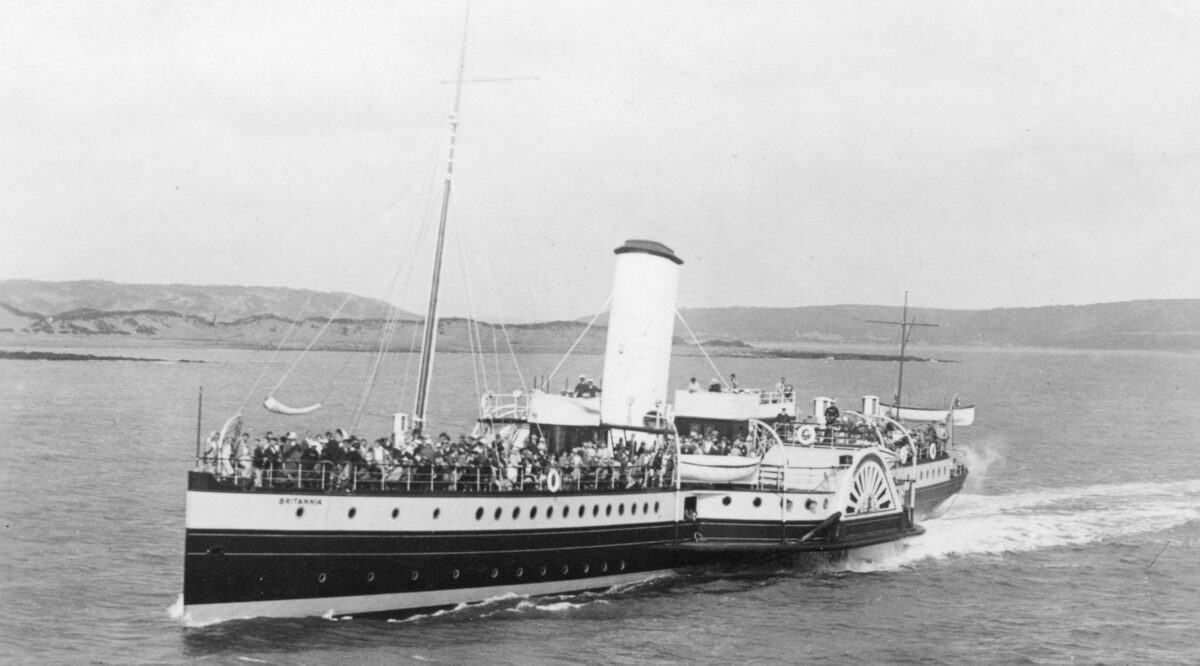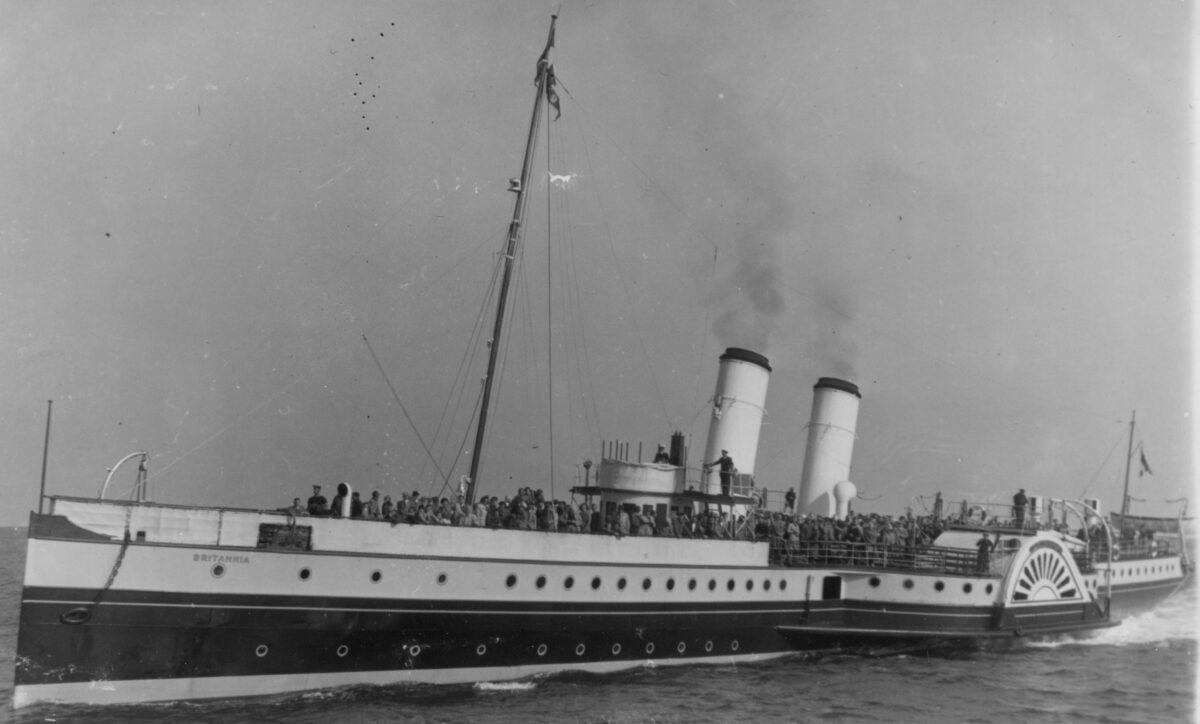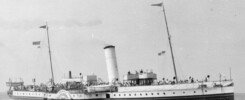
On Monday 18th October 1920 P & A Campbell’s Britannia shifted ship from Bridge Wharf Glasgow, where she had arrived from Bristol on the previous Friday, to the yard of A & J Inglis to have a new boiler fitted.
In the early days of excursion paddle steamers all sorts of designs were used for boilers including haystack and square boilers but the overwhelming majority of later excursion paddle steamers had cylindrical fire tube Scotch boilers with domed end plates. Sometimes they were single ended with the furnaces at just one end and sometimes they were double ended with furnaces at both ends.
These Scotch boilers were generally over engineered by today’s standards and therefore often lasted well with some notching up as much as thirty or forty years of service, much better than could reasonably be expected from a modern package boiler. Some did even better. For example, Shieldhall’s Scotch boilers are currently sixty four years old and still going strong.
However some, particularly those on ships with more punishing sea-going schedules, had much shorter lives. Red Funnel’s Cross Channel flyer Balmoral, much associated throughout her career with the run from Southampton and Bournemouth to Cherbourg, needed boiler renewal just seven years into her career in 1907 and then again in 1920. Contrast that with Red Funnel’s Princess Elizabeth which was still steaming around on her original boiler in 1965 thirty eight years after it was built.

So how many boilers did Britannia end up having in her sixty year career? The answer to that is that she beat her sister Cambria’s three by having four. The 1920 one lasted for only 14 seasons before being replaced in March 1935, again in Glasgow, in a refit from which she emerged with a bigger, fatter and flat sided funnel.
She arrived in Glasgow at the Elderslie Dockyard on Friday 8th March 1935 for the third to be fitted. The work proceeded apace with the old boiler lifted out on Monday 11th. The new one was lifted in on Tuesday 26th. Steam was raised on Thursday 4th April and Britannia set off from Gourock back to Bristol the following day. With everything going smoothly the whole job had taken less than a month.

That boiler had an even shorter career of only twelve operational years. Britannia did not sail in the 1947 season because of boiler issues and had her fourth new double ended boiler built by Fairfield’s of Govan on the Clyde but installed in Cardiff in August of that year in a refit from which she emerged with a very different profile sporting two funnels.
This installation ran into difficulties when it was discovered that the new boiler was slightly too big to fit in and had to be lifted out again for further work to adjust the boiler cradles. The Board of Trade also raised questions about weight and stability and this led to Britannia loosing her Class II Cross Channel Certificate, her two forward lifeboats and her aft deckhouse to reduce weight and having her passenger capacity reduced by 100. This final boiler had the shortest life of all going to the scrapyard with Britannia nine years later in 1956.
Back in Glasgow in the autumn of 1920, work on installing Britannia’s second boiler was completed in about seven weeks with the ship then moved to Bowling Harbour on Monday 8th December to lay up for the rest of the winter. The following May she was caught up in a strike and it was not until Wednesday 8th June 1921 that she eventually left Greenock for Bristol.
Kingswear Castle returned to service in 2023 after the first part of a major rebuild which is designed to set her up for the next 25 years running on the River Dart. The Paddle Steamer Kingswear Castle Trust is now fund raising for the second phase of the rebuild. You can read more about the rebuilds and how you can help if you can here.
John Megoran
This article was first published on 18th October 2020.


